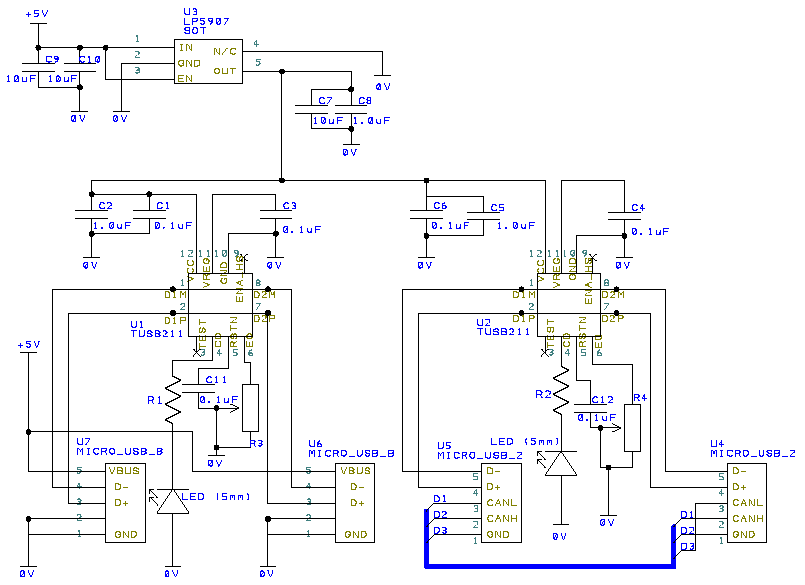Hi,
I have some question about TUSB211.
We attached two USB cameras to the arm robot and used the wiring through the robot.
After that, because of ease of maintenance, we split the cable into seven parts and attached the connectors to each, but the camera did not work well.
I thought that the cause of the problem was increased contact resistance due to the connector being attached.
Therefore, referring to the circuit diagram of the USB 2.0 and 3.0 re-driver evaluation module (www.tij.co.jp/.../usb-redriver-evm),
I made a USB re-driver circuit incorporating TUSB 211, but it did not work well.
So there are some question,
· Can TUSB211 be used even in such a case?
· If it can be used, it is about 2 m cable, so Is TUSB211 suitable for one use?
I would like you to tell me about two points.
As a reference, I put the circuit diagram of the USB 2.0 redriver circuit I made.
Beat regards,


